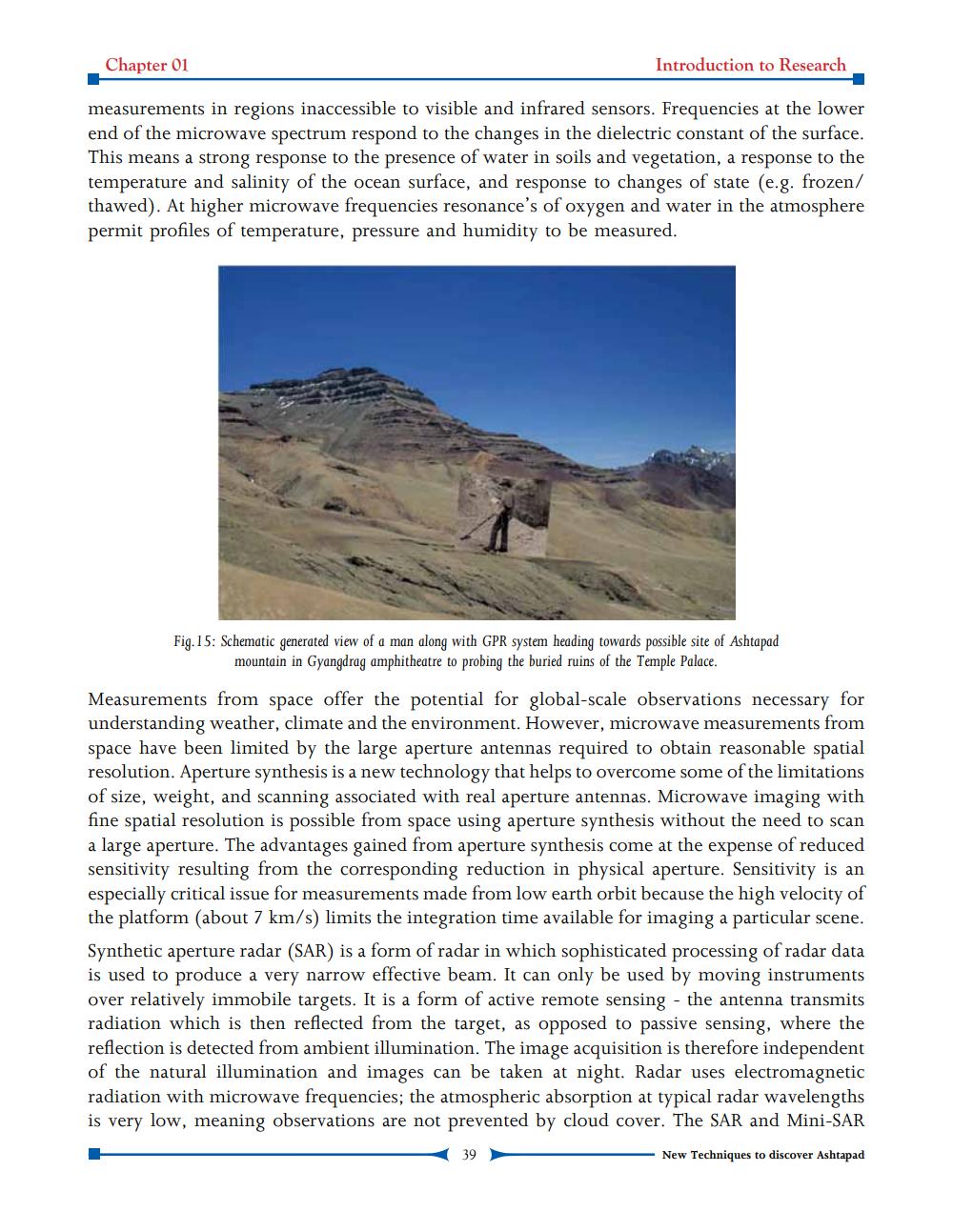________________
Chapter 01
Introduction to Research
measurements in regions inaccessible to visible and infrared sensors. Frequencies at the lower end of the microwave spectrum respond to the changes in the dielectric constant of the surface. This means a strong response to the presence of water in soils and vegetation, a response to the temperature and salinity of the ocean surface, and response to changes of state (e.g. frozen/ thawed). At higher microwave frequencies resonance's of oxygen and water in the atmosphere permit profiles of temperature, pressure and humidity to be measured.
Fig.15: Schematic generated view of a man along with GPR system heading towards possible site of Ashtapad
mountain in Gyangdrag amphitheatre to probing the buried ruins of the Temple Palace.
Measurements from space offer the potential for global-scale observations necessary for understanding weather, climate and the environment. However, microwave measurements from space have been limited by the large aperture antennas required to obtain reasonable spatial resolution. Aperture synthesis is a new technology that helps to overcome some of the limitations of size, weight, and scanning associated with real aperture antennas. Microwave imaging with fine spatial resolution is possible from space using aperture synthesis without the need to scan a large aperture. The advantages gained from aperture synthesis come at the expense of reduced sensitivity resulting from the corresponding reduction in physical aperture. Sensitivity is an especially critical issue for measurements made from low earth orbit because the high velocity of the platform (about 7 km/s) limits the integration time available for imaging a particular scene. Synthetic aperture radar (SAR) is a form of radar in which sophisticated processing of radar data is used to produce a very narrow effective beam. It can only be used by moving instruments over relatively immobile targets. It is a form of active remote sensing - the antenna transmits radiation which is then reflected from the target, as opposed to passive sensing, where the reflection is detected from ambient illumination. The image acquisition is therefore independent of the natural illumination and images can be taken at night. Radar uses electromagnetic radiation with microwave frequencies; the atmospheric absorption at typical radar wavelengths is very low, meaning observations are not prevented by cloud cover. The SAR and Mini-SAR
39
- New Techniques to discover Ashtapad




